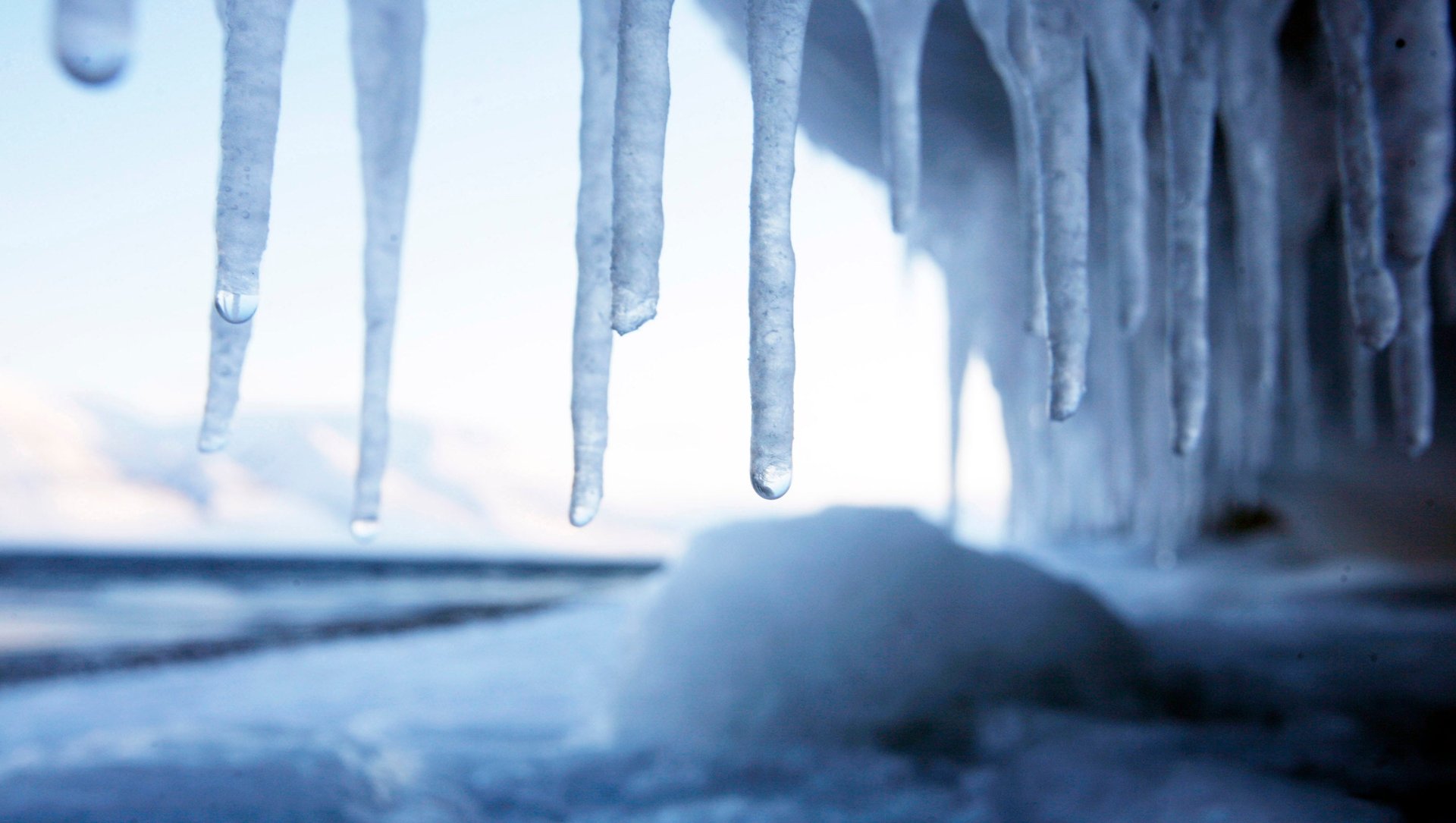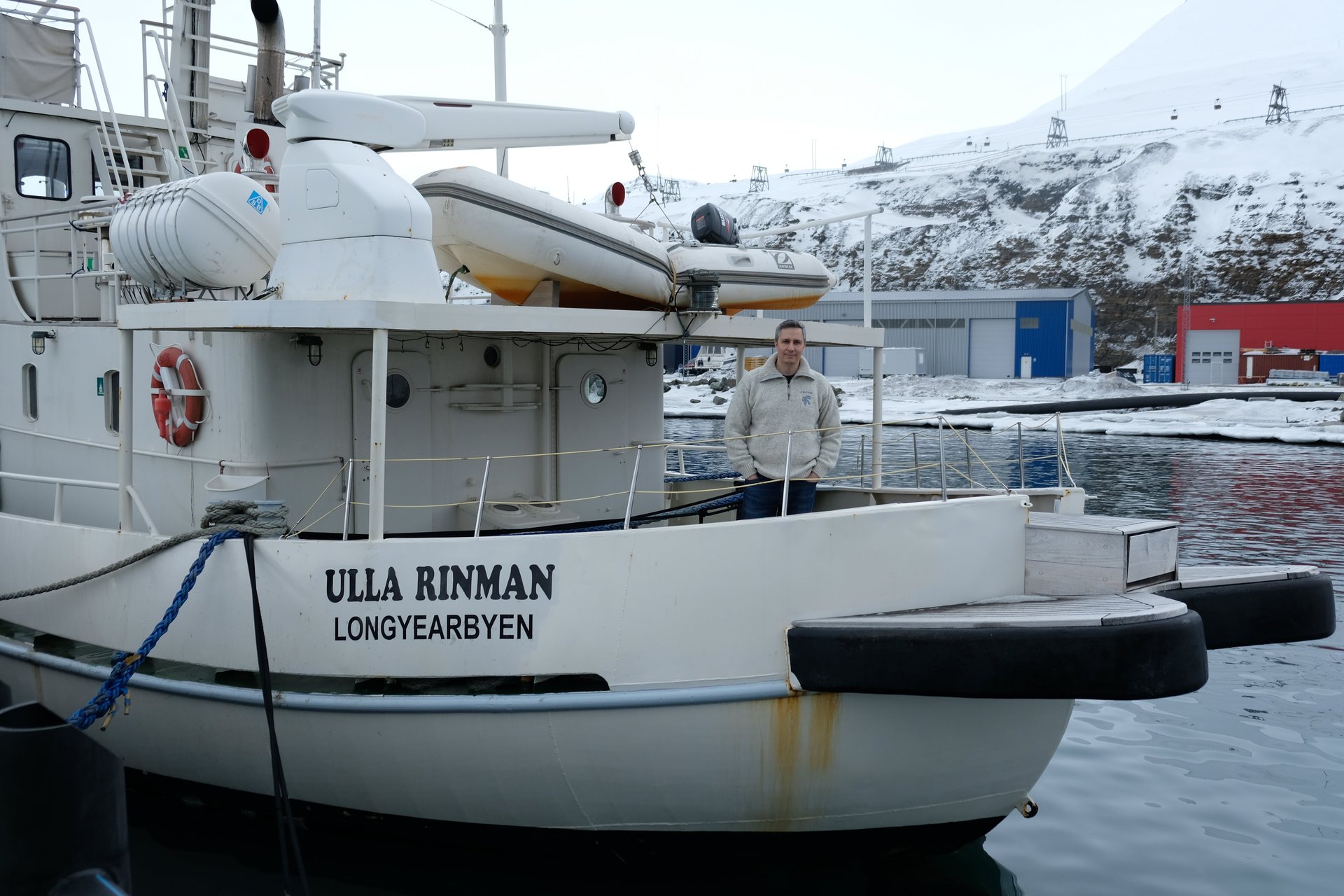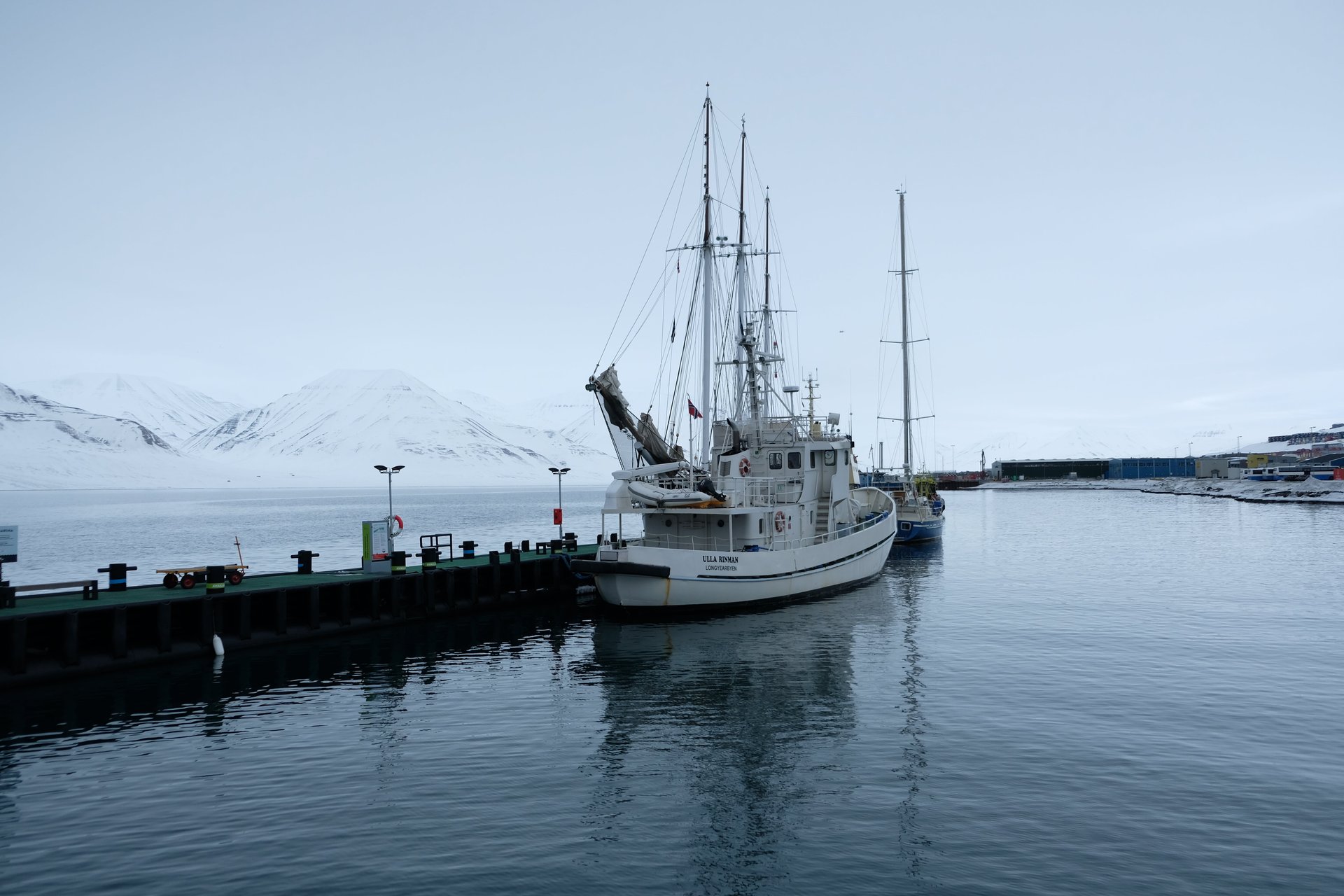The €75 glacier water that perfectly captures the moral dilemma of luxury in our late capitalist age
In 2013, Jamal Qureshi went on a trip to Svalbard—a Norwegian archipelago high above the Artic circle, covered in glaciers. While hiking around the Larsbreen glacier, he decided to collect a bit of melted water from the glacier to bring back to New York as a gift for his wife, who used it to make a cup of herbal tea.


In 2013, Jamal Qureshi went on a trip to Svalbard—a Norwegian archipelago high above the Artic circle, covered in glaciers. While hiking around the Larsbreen glacier, he decided to collect a bit of melted water from the glacier to bring back to New York as a gift for his wife, who used it to make a cup of herbal tea.
It was the moment that inspired Qureshi to found Svalbardi, a company that peddles “the world’s most exclusive bottled water,” according to its website. Qureshi moved his family from New York to Longyearbyen, Svalbard’s largest town, and the northernmost human settlement in the world, in 2016, and began to plot out his business. Today, customers can buy 750 milliliter bottles of the iceberg water for 75 euro a pop. Promotional copy touts its “light as air taste,” which comes from its terroir: “pristine ice, locked up for millennia and fresh as the day it fell as snow.”
Svalbardi is among dozens of artisanal luxury water companies, collecting water from difficult-to-access corners of the world. Kona Deep is collected 3,000 feet below the shores of Hawaii; ORO is bottled at a spring in the Macedonian Alps. The brand KRYSTAL, which comes from mountain range straddling China and Russia, even claims that the unique chemistry of its water provides health benefits.
The industry has been widely mocked in popular media, held up as a reflection of the ills and excesses of capitalist culture. “Artisanal Water: It’s What You Sell When People Will Buy Anything,” reads one Atlantic headline about the trend. A Guardian op-ed called the whole enterprise “ignorant, insensitive, and irresponsible.” News stories about the citizens of Puerto Rico, Cape Town, and Flint, Michigan, struggling to access potable water only make the idea of luxury water seem more preposterous. What screams “corporate greed” more than a marked-up necessity of human life?

But ask Qureshi about his business, and it seems evident that he’s driven more by wonder than by blind opportunism. He spends a while telling me about an ice cap near breathtaking glacial waterfalls and a remote island swarming with polar bears, which is where he’d like to collect water next. He seems acutely aware of Svalbardi’s place as a luxury item. It’s meant to be a niche product, he says, not something people drink everyday. “Water is a fundamental basic human right. We’re not saying this is what all water should be,” he says. “But let’s do a comparison: food is a fundamental human right, too, but you might like an expensive sushi, caviar, or steak. It’s the same concept here.”
He has a point. We’re used to hearing about rich folks ordering Dom Perignon at the club, celebrities donning couture gowns, and billionaires building mansions on private islands. Luxury water is a special target for our disdain largely because it’s new. And with its debut comes the uncomfortable realization that scarcity and sleek marketing can drive up the value of virtually anything. Mocking luxury water is comforting: I can’t be had by this farce, we say to ourselves. But many Americans already indulge in little luxuries: a nice bottle of wine, a fancy dinner, gourmet chocolates, a new smartphone. If luxury water sets our moral compasses twirling, we should probably think hard about our other indulgences in life, too.
Why luxury water costs so much
You might have an image in your head of what a Wall Street analyst-turned-artisanal water CEO looks like. Qureshi isn’t it. He shows up to the only coffee shop in Longyearbyen right on time, wearing jeans and a wool sweater with an embroidered image of Svalbard on the left breast, the same kind I’d seen tourists wearing around town. “Sorry,” he says, motioning at the phone in his hand. “Email from someone who isn’t a fan.” He types out another few words, then continues: “It’s really easy to run from these messages, but sometimes it’s good. Skepticism is understandable, and I don’t mind engaging with that.”
One of the most obvious questions about Svalbardi is why it’s so expensive to begin with—even more costly than the other luxury waters for sale, like ORO ($12) or Scotland’s Windy Hollow ($20). Tap water, meanwhile, requires a great deal of infrastructure, yet costs mere cents in most places. How is it possible that just 750 ml of water could cost so much?
If you visit Svalbard, you quickly learn that nothing there is easy to come by. Though technically part of Norway, Svalbard is about 600 miles across the Norwegian Sea from the mainland. (Qureshi calls it a “moon colony that happens to be run by Norwegians.”) The free shipping Svalbardi offers from its bottling operations in Longyearbyen gets expensive, as there are a limited number of boats and planes to transport goods between the town and mainland Europe. At one point, Qureshi pointed out the mail plane flying into the airport. “Comes twice a week,” he said. “Or when it doesn’t, that’s when we don’t have milk at the co-op.”
The company has also gone to great lengths to collect the ice itself. Svalbard has strict environmental rules protecting local wildlife and fauna, but, unsurprisingly, there were no explicit regulations around gathering ice before Qureshi showed up. “When I first approached the Governor’s office about wanting to do this, they scratched their heads,” says Qureshi. But together, they decided on some key rules — Qureshi would avoid sensitive areas, especially those that would disturb wildlife, and keep the governor’s office abreast of his activities.

For his first — and so far, only — ice collection voyage, Qureshi chartered the Ulla Rinman, a 23-meter icebreaker, formerly used as a Swedish rescue vessel on the Baltic Sea and now owned by the tour company Svalbard Explorer. The Ulla Rinman crew traveled about 100 nautical miles northwest to Kongsfjorden, an inlet on the west coast of Spitsbergen, one of the Svalbard archipelago’s three main islands.
“We pulled into the fjord around 2am, and there wasn’t any ice,” Qureshi says. (This was in July, when Svalbard experiences 24-hour daylight, so evening travel isn’t dangerous for boats.) They went to bed, and when they woke up six hours later, they were surrounded by icebergs. “Currents shift, winds can push ice up against the glacier, and boom, the fjord was full of them.”
Qureshi selected several blocks of ice weighing between a half and full ton, and collected them with a net attached to a crane on the boat’s deck. After he hauled them up, they were transported back to Svalbard in giant plastic containers, where they’ve been kept in an enormous, walk-in freezer vault just across the street from the boatyard. From there, blocks taken from the midsections of icebergs (the “purest” parts, says Qureshi) are moved to Svalbardi’s processing lab, where the ice moves through a heated funnel, that can melt up to 500 liters of water an hour. “There’s absolute minimum processing — we don’t want to taste the chemistry,” says Qureshi.
Purity is a big part of Svalbardi’s brand. In an episode of his water-tasting YouTube series, water sommelier Martin Riese describes Svalbardi’s taste as “super smooth.” Qureshi compares its subtle, light taste to the snow he tried eating as a kid. That’s because glacial ice basically is snow, which has very few minerals, Qureshi explains. Water’s mineral content is typically measured in terms of milligrams of total dissolved solids (TDS) per liter; higher mineral content changes water’s taste and mouth-feel. Typical bottled waters will include up to 400 TDS — beyond that are what Qureshi calls “challenging tastes.” The TDS of Svalbardi is under 50.
Other critics are less concerned with the price or taste of Svalbardi, worrying about the environmental impact of traveling long distances to yank icebergs out of the water. (Coincidentally, harvesting icebergs for their freshwater has recently been proposed as a stopgap solution for water shortages in Cape Town and the UAE.) Qureshi points out that the company is certified carbon neutral (and is hoping to become carbon-negative), and that the fine water sector has a vested interest in preserving the environment. “We care deeply about our sources—we want to ensure they are maintained, pristine, and sustainable,” he says.
The chance to experience those pristine glaciers is a luxury in itself—and that’s precisely what a lot of Qureshi’s customers are paying for. If you can’t see Svalbard, you can at least taste it. According to Qureshi, most of his customers are middle-class folks buying Svalbardi as a souvenir to take home, or as a gift for someone else. Compared to the cost of a penthouse or fine caviar, this kind of luxury is decidedly affordable.
Does that justify the water’s price tag? Not necessarily. But it is useful to remember that the company’s “luxury connoisseurs” aren’t necessarily what you’d expect. Like Qureshi bringing glacial melt to his wife, they’re looking for a way to bottle and share the experience of a faraway place.
Reporting for this story was supported by the International Women’s Media Foundation’s Howard G. Buffett Fund for Women Journalists.